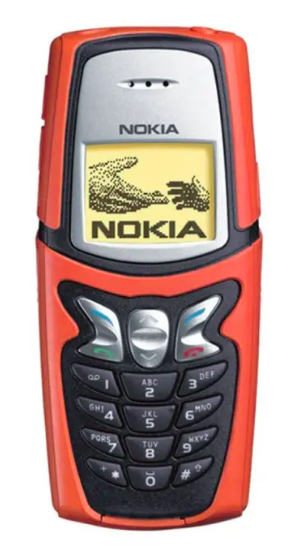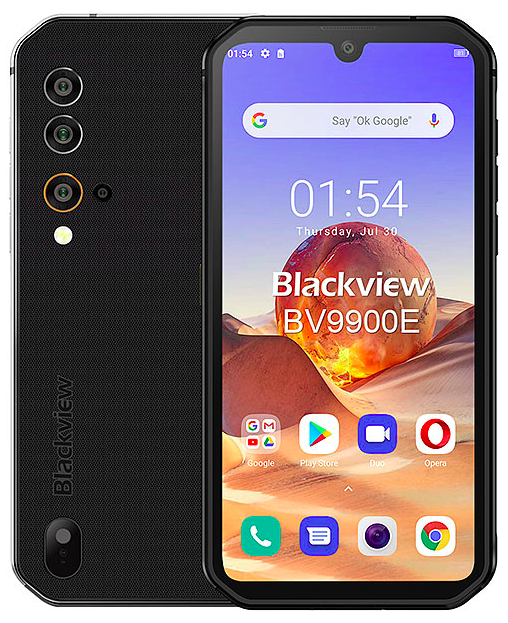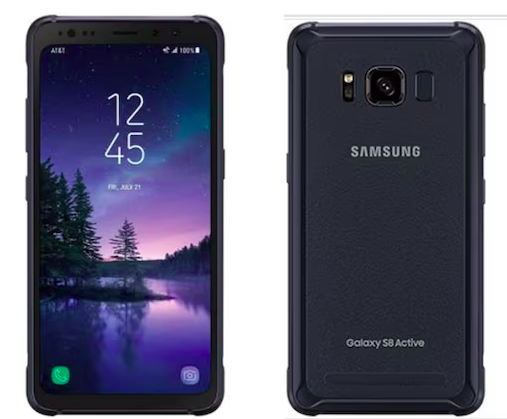Nokia and Ericsson - Adam & Eve of the rugged phone.
Take your mind back to the start of the century. Nokia were the uncrowned kings of phones, only realistically to be usurbed by Ericsson. Scandinavia was the bomb in terms of mobile phones. But what about Motorola? Well, to be fair: They were first to the consumer market, but lost first and second (and probably even more) places to Scandinavs.
This, too, was prior to the term 'smart phone', but where the rugged phone approach was launched.
Smart phones was initially defined by 3G support, color screen, a camera and some measure of connectivity.
The Nokia 5140 only worked on GSM networks, but was a rugged update of the 5100 which again was designed to be as small as possible:
These were the times, where screen size was a no-issue (as they should roughly only contain a few lines of text as well as the Snake game), all phones would feature user-removable batteries, and chargers were brand or even model specific.
The first rugged thing (I owned), Nokia 5210
The Nokia 5210 was rugged. It was not as such very much more sturdy than, say, a Nokia 3210 or it's successor the 3310, but did feature a cover in rubber.
I severely doubt it would stand much of water pressure, but did in use show to be less vulnerable to rain - very practical in a country as Denmark, in which bicycling around in the rain is very much is the way to go in urban areas.
Sound quality was OK, it featured polyphonic ringtones and you had the option to transfer ringtones through an infrared port - or, if you had the equipment, a COM or USB port cable.
It was even possible to set up internet access through this on Windows 95.
That would be GSM/EDGE speeds, though. About adequate for checking e-mails and have some measure of surf possibilites (in spite of webpages often being very graphic and full of flashing gifs).
The rugged cover did, however, hinder the phone's use. The buttons were very small, volume buttons quite hard to push - and the charger port was hidden behind a rubber flap.
Writing a text was entirely possible, but you were more likely to have to look at what you were doing, than, say a Nokia 3510i (which I used to take notes during my Social Anthropological fieldwork in 2007).
It was innovative to design a phone which's design seemed to be aimed at adressing two of the main reasons why phones would break: Water and cracked screens.
Which by today's standard seems a weird point (the reason why you won't see any reviews of Apple phones here is a) they don't really do rugged b) they have a very well documented "sundown"-strategy on their software).
The longivity of the phone and the two above mentioned parameters probably was the reason I eventually had to retire the phone as the sceen one day just would say
"Please turn in to service" - after five years of on/off use. And that was that.
I don't think there was a 'end of life' deadline, but I started to look elsewhere for a phone by then.
The Nokia 5140 is still available on eBay for the expected 'cult prices'. A new shell, however, may be hard to come by, so if you plan to downgrade to this historical artifact, it will have a deadline when it wears down.
All sorts of weird specs that I cannot be arsed to write:
GSMarena
It had a follow-up by the Nokia 5140i - color screen, camera added. Larger frame. Yet, still GSM.
Ericsson R310s
This is one of the more curious phones. It even has a Wikipedia page.
I remember reading a review in which a Danish car magazine tried to destroy a R310s. Test included dropping it from sixt floor, washing it multiple times at 60 degrees, throwing it with all their might against walls, and eventually running it over with a BMW. It took reversing over it again to actually make it break.
This was definitely a phone built to last, but in use also really hard to love:
- It was by then's standards chunky, the iconic shark fin antenna made it hard to fit anywhere, and the keys very really not that easy to press.
A theme was already struck here: Ruggedness may hinder ease of use.
Sound quality was excellent (for all the praise Nokia gets these days, Ericsson prior to Sony had an edge in this department), but fatally it didn't have a T9 dictionary and writing texts on the bloody thing was a hassle. Combine hard keys with no dictionary?
What were the Swedes thinking? Probably about how to destroy this kind of quality...
I feel confident this was the most rugged phone the world have ever seen.
It was just so hard to live with that I didn't have it for very long - texting was a very important thing back in the start of the century, and it seems very obvious that Nokia's success was mainly due to the fact that they a) had the innovation of T9 dictionary (secondary; snake ;-) ) b) launched a large number of various 'smaller' models around the flag ships such as 3210, 3310, and 3510i (brilliant one to pick amongst those: The Nokia 6310i which was both beautiful and highly functional).
All of these models, however predated the smartphone, as they all ran on GSM network.
When smartphones became a thing, I had a period of time where I used various Nokias with T9 or full keyboard, all able to run 3G and tethering through a 3rd party app. Happy days, but none of them were particularly rugged. In fact, more than one of them died in rain storms...
Which is all fun and well. But now on to matters rugged smartphones.




Comments
Post a Comment